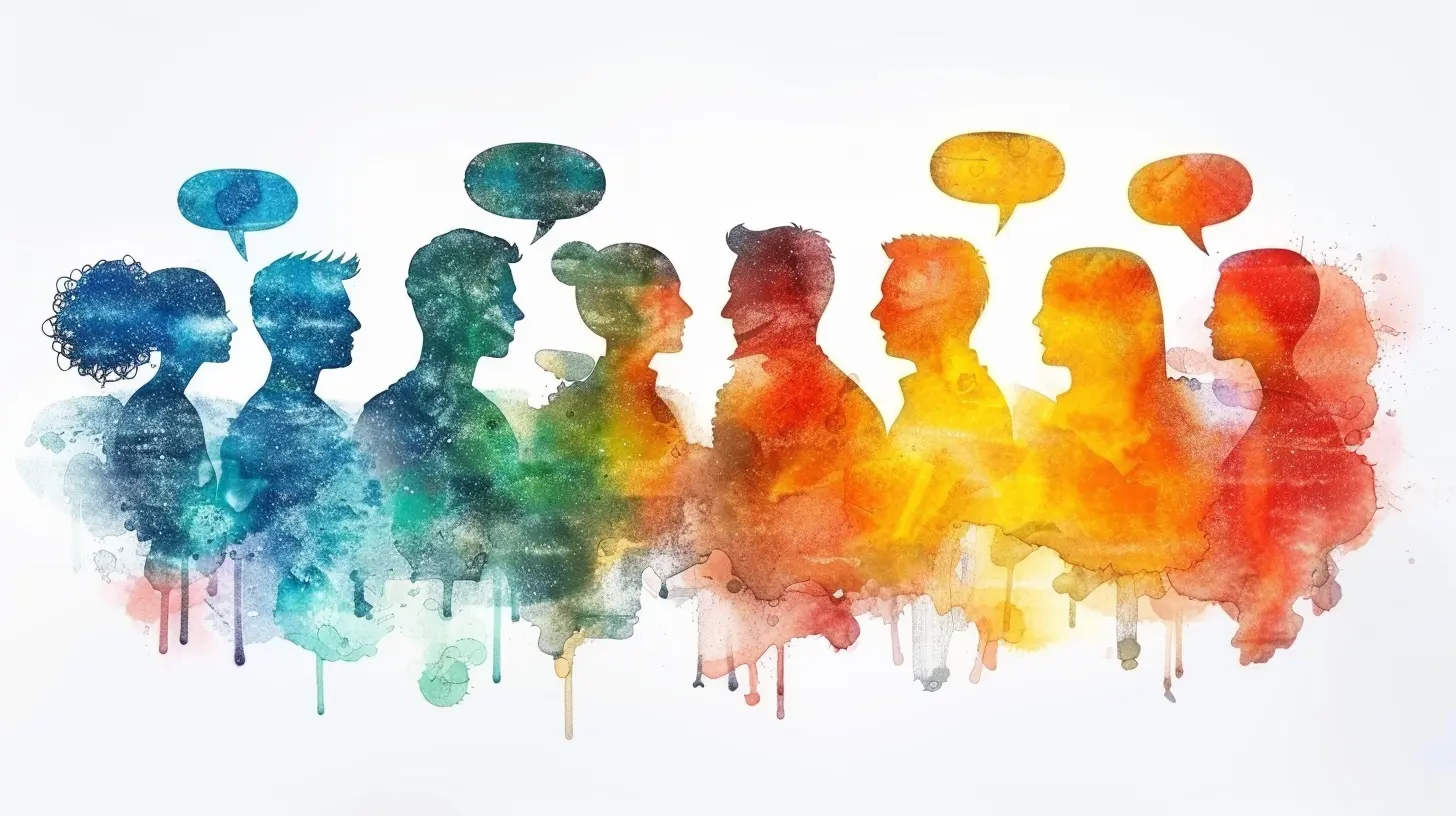How to Adapt Your Communication Style for Different Audiences
15 June 2025
Ever been in a conversation where you felt like your words were flying over someone’s head or, worse, crashing down like a lead balloon? You’re not alone, friend. Whether you're pitching a business idea, teaching a class, or just trying to explain TikTok to your grandma, the way you communicate makes or breaks the whole deal.
So, how can you tweak your communication style like a pro DJ spinning the perfect track for every kind of crowd? That’s exactly what we’re diving into today.
Grab your metaphorical toolkit—because by the end of this article, you’ll be armed with everything short of telepathy to make your message hit home!
Why Communication Isn’t a One-Size-Fits-All Situation
Imagine wearing the same pair of shoes for running, hiking, and a wedding. Weird, right?That’s how using the same communication style for every audience feels. It might “sort of” get the job done, but it won't get you gold stars—or even polite nods—if you're not tailoring it right.
Different people process information in different ways. Your boss might want bullet points. Your peers? Memes, maybe. And your students? Well, you’ll need to be part educator, part stand-up comedian.
The key is understanding that your words—and how you use 'em—need a little custom fitting.
The Golden Rule: Know Thy Audience
Before you even think about opening your mouth or typing away on your keyboard, ask yourself:- Who am I talking to?
- What do they care about?
- What’s their level of knowledge on the topic?
- How formal or informal do they expect me to be?
Picture this: Explaining blockchain to a 10-year-old vs. a tech investor. Same topic. Wildly different delivery.
Knowing your audience isn’t just nice—it’s non-negotiable.
Communication Styles: A Quick Refresher
Not sure what your “style” even is? Let’s break it down simply. There are four main types:1. Assertive
Confident, direct, and respectful. Think: “Here’s what I need, and here’s how we can get it done.”This is the golden goose of communication—effective in most situations.
2. Passive
Soft-spoken and indirect. Imagine those people who say, “It’s fine,” when it clearly isn’t.This style works best when you’re trying to avoid conflict, but it can make you look like you’re unsure.
3. Aggressive
Forceful and blunt. More “my way or the highway.”Spoiler: This rarely wins hearts and minds, unless you’re a drill sergeant or a reality TV judge.
4. Passive-Aggressive
The sarcastic cousin of the passive style. It’s like adding glitter to a complaint and hoping no one notices it’s still a complaint.Fun at parties, not so much in professional settings.
You probably lean toward one of these styles naturally, but guess what? You’re not stuck there. Adaptability is your new best friend.
Tips for Adapting Your Style Like a Communication Chameleon
Alright, now for the meat and potatoes. Here’s how to morph your message depending on who’s sitting across the table—or screen.1. For Your Boss or Supervisor
Goal: Be efficient, respectful, and confident.Speak like someone who values their time—because they sure do.
- Use bullet points if you're writing.
- Lead with results or actions.
- Avoid fluff and overly personal anecdotes (save those for lunch breaks).
- Match their tone: If they're formal, you be formal. If they crack jokes, you can loosen up a bit too.
🙋 Pro Tip: Think like a headline. Bosses want the “what” and “why” before they care about the “how.”
2. For Peers and Colleagues
Goal: Be collaborative, clear, and friendly.This is where you can let your hair down a little.
- Use everyday language—ditch the jargon unless it’s shared knowledge.
- Ask for input, offer help, and show appreciation.
- Humor? Yes. Sarcasm? Depends on the company culture.
🙋 Pro Tip: Be human. You’re not a robot—they’re not robots. Don’t act like one.
3. For Students or Learners
Goal: Be engaging, informative, and ultra-clear.Students aren’t just vessels to pour knowledge into—they need context, stories, and a bit of entertainment to stay tuned in.
- Use analogies to explain complicated topics.
- Reiterate the key points without sounding like a broken record.
- Ask rhetorical questions to get them thinking.
- Use real-life examples—they stick better than theory.
🙋 Pro Tip: If your audience is under 25, memes and pop culture references? Chef’s kiss.
4. For Customers or Clients
Goal: Build trust, provide value, and be approachable.Nobody wants a lecture. They want solutions wrapped in friendliness and clarity.
- Use their language. If they say “simple,” don’t hit them with a 20-slide PowerPoint.
- Be transparent. If something’s not possible, say so—but offer alternatives.
- Inject a little personality where possible. It makes you memorable.
🙋 Pro Tip: Don’t bury your message in buzzwords. Be the anti-buzzword.
5. For Executives or Stakeholders
Goal: Be strategic, concise, and data-driven.You’re not just telling them stuff—you’re influencing decisions.
- Lead with insights, not background stories.
- Highlight ROI, impact, timelines.
- Skip the fluff. Seriously. They’ve got 15 seconds before they mentally swipe left.
🙋 Pro Tip: Think: elevator pitch. If you can’t explain it in under a minute, you’re not ready.
Body Language and Tone: The Silent Communicators
Even if you’ve got the words down cold, your body might be telling a different story.- 🐢 Slouching? Looks like you don’t care.
- 🙄 Eye rolls? Might as well shout, “I disagree in the most teenage way possible!”
- 👐 Open gestures? You seem trustworthy.
- 🧍 Too stiff? You might come off like a talking statue.
And your tone matters too—probably more than your actual words. Use a friendly, sincere tone whenever you can. Think warm coffee, not iced tea in a blizzard.
Written vs. Verbal Communication Styles
Quick reminder: Emailing is not the same as chatting. Your tone can vanish like a Snapchat message if you’re not careful.Here’s how to keep it reader-friendly:
- Use exclamation points sparingly (but don't be afraid of them).
- Emojis? Only if the context is casual and appropriate.
- Break up long paragraphs—no one wants to read a wall of text.
- Proofread. Then proofread the proofread. Typos are tiny gremlins that ruin credibility.
Cultural and Language Nuances
Global audience? You’ve got an extra layer to think about.- Avoid slang that might not translate well.
- Be extra clear—idioms can get lost like socks in a dryer.
- Respect different norms around humor, personal space, directness, etc.
A little cultural sensitivity goes a long way—and shows you did your homework.
Listening: The Secret Weapon
We talk a lot about talking, but listening? That’s where the magic happens.Adapting your communication style isn’t just about projecting the right vibe—it’s about picking up on subtle cues and adjusting in real-time.
- Pause and paraphrase to check understanding.
- Watch for boredom, confusion, or excitement—and respond accordingly.
- Ask questions to draw them in.
Listening is like echolocation for communicators. It helps you navigate and connect.
Practice Makes Pretty Darn Good
Let’s be honest—this isn’t a one-and-done skill. It takes some trial, a bit of error, and whole lot of coffee (probably).Try this:
- Record yourself explaining the same topic to three different groups.
- Ask for feedback from trusted friends or coworkers.
- Take note of what gets eyes to light up and what causes glazed expressions.
The more you practice, the easier it gets to flip the switch and adapt seamlessly.
Final Thoughts: Communication is Connection
At its core, communication isn’t about sounding smart or throwing around big words—it’s about connection. It’s how we share what matters, bridge gaps, and maybe even spark a little magic.So, don’t get stuck in one lane. Be curious. Be observant. Be the Swiss Army knife of communicators.
And remember: In the right context, a well-timed meme can be more powerful than a PowerPoint.
all images in this post were generated using AI tools
Category:
Communication SkillsAuthor:

Olivia Chapman
Discussion
rate this article
3 comments
Kason Ward
Great tips! Adapting your communication style is like finding the right outfit for an occasion—it's all about making a connection. Embrace the challenge, be playful, and remember: your words have the power to inspire. Keep shining and communicating with confidence! 🌟
June 21, 2025 at 3:14 AM

Olivia Chapman
Thank you! I appreciate your insightful analogy—dressing for the occasion truly enhances connection. Let’s keep inspiring through our words! 🌟
Indigo McHugh
This article offers valuable insights into tailoring communication styles for diverse audiences. Understanding the unique needs and preferences of each group fosters effective engagement and ensures messages are received as intended. Adapting our approach not only enhances clarity but also builds stronger connections. A must-read for anyone looking to improve their communication skills!
June 16, 2025 at 2:28 AM

Olivia Chapman
Thank you for your thoughtful comment! I'm glad you found the insights valuable for enhancing communication skills.
Deborah McElveen
Adapting communication styles is an art that transcends mere words. It requires empathy, an understanding of diverse perspectives, and the ability to connect on a human level. In a world of varied experiences, effective communication fosters collaboration, bridges gaps, and builds meaningful relationships.
June 15, 2025 at 4:30 AM

Olivia Chapman
Absolutely! Adapting communication styles is essential for fostering understanding and connection. By embracing empathy and diverse perspectives, we can enhance collaboration and build stronger relationships with our audiences.



